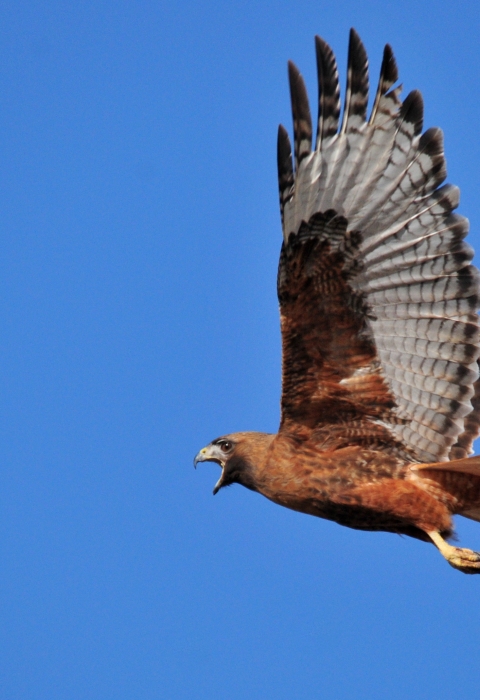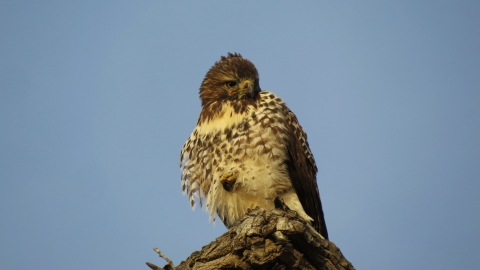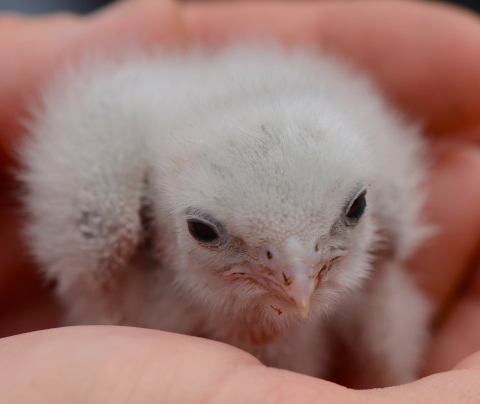

Summer is here and with it comes an increased chance of encountering an urban raptor. While these winged predators are present year round in this region, it is only for a brief period each year when conflicts tend to arise. We believe through education and better understanding, we can learn to coexist with these ecologically important birds of prey.
The two most common raptor-related issues we see with this time of year are aggressive raptors protecting a nest, and people “rescuing” fledging raptors found on the ground. Both increase the frequency of human-raptor encounters and both can have negative impacts for the birds and residents of the community. However, by following simple advice, we hope to empower local residents to respond appropriately.

Chances are if you encounter an aggressive raptor this time of year, it is simply trying to protect its nest. Here are tips for what to do and not to do if you encounter an aggressive raptor:
Several species of raptors including Red-tailed Hawks, Red-shouldered Hawks, Cooper’s Hawks, Swainson’s Hawks, Northern Goshawks, Broad-winged Hawks, and Peregrine Falcons may display this aggression towards humans during the nesting season, approximately January-August. Goshawks are particularly prone to aggressive air-borne diving on intruders. Some species may be more aggressive than others. These birds only act this way as a means to protect their young.
In the majority of cases, an aggressive raptor will stop protecting its nest once all its young have fledged and left the nest area. In general, you can assume one month from egg hatch to fledging, and another 2–4 weeks until the young leave the area completely.
It is common this time of year to find a raptor — such as Cooper’s hawks and American kestrels — out of the nest on the ground. This is NOT unusual and likely not a cause for concern. Many young raptors at this stage, known as branching or fledging, are old enough to learn to fly and are not in the danger people assume.

The practice of “nest jumping” is unique to birds of prey. Before taking first flight, younger raptors move onto branches around their nest and often fall. If on the ground, parents will continue to feed and protect the young raptors and even encourage them to climb back up the tree or fly.
If you do encounter a fledging on the ground, follows these tips to ensure you do not do more harm than good:
It is important to remember that raptors play a vital role in keeping our communities healthy. These specialized birds of pretty bring balance to our ecosystem by keeping pigeon and dove populations healthy and reducing rodent populations. In doing so, they help prevent disease from spreading. Also, as top predators, they act as a barometer for the overall health of our environment. Healthy raptor populations are important to maintaining an environment that sustains both human and wildlife alike.